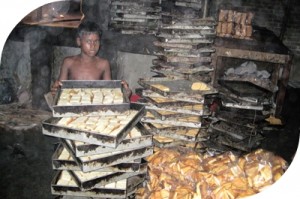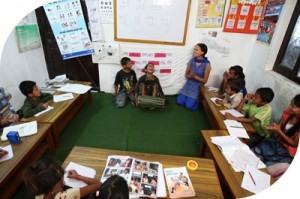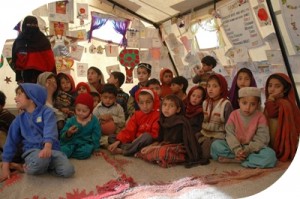6.12 International Day Against Child Labour
2010-06-11

The Hong Kong Committee for UNICEF calls for action to support the International Day Against Child Labour on 12 June, to stop child labour, and strive to uphold every child's right and ensure well-being of children all over the world. We would like to remind all parents in Hong Kong to evade inappropriate child-headed households.
| Child labour not only refers to the engagement of children in economic activities, but also the overwhelmingly burden of household chores to children. UNICEF defines child labour as: |
1) Ages 5-11: At least one hour of economic work or 28 hours of domestic work per week;
2) Ages 12-14: At least 14 hours of economic work or 28 hours of domestic work per week;
3) Ages 15-17: At least 43 hours of economic or domestic work per week.
Facts on Children:
1) In Sub-Sahara Africa, around one in three children are engaged in child labour, representing 69 million children.
2) In South Asia, another 44 million are engaged in child labour.
Real Life story:
In Gaza, hunger and need drive families to allow their children to abandon schooling, a 12 years-old Nael Hasan al-Lada worked in an auto-body shop is just one of the examples. Despite the long hours and the dangers of working around heavy machinery, Nael needed to leave school and worked for full-time.
UNICEF Action to combat Child Labour :
| 1) Set up Rehabilitation Centre for children
To combat child labour in Nepal, UNICEF sets up a rehabilitation center called Hamro Ghar (Our House), it gives exploited children a fresh start as well. Maya, mentioned in the story above, is receiving vocational education and training. She thinks the best thing about her life now is getting an education. She wants to be a teacher when she grows up.
|
 |
 |
2) Supporting Child-friendly learning and quality education in Gaza
UNICEF also supports child-friendly learning and quality education in Gaza and has distributed a wide range of supplies including 21 school tents, school-in-a-box kits and recreation kits, benefiting thousands of children. Nael said he wanted to go back to school and continue his education.
|
"UNICEF does not oppose work that children may perform at home, on the family farm or for a family business - as long as that work is not a danger to their health and well-being, and it does not prevent them from going to school and enjoying childhood activities," said Ms. Irene Chan, the Chief Executive of Hong Kong Committee for UNICEF.









